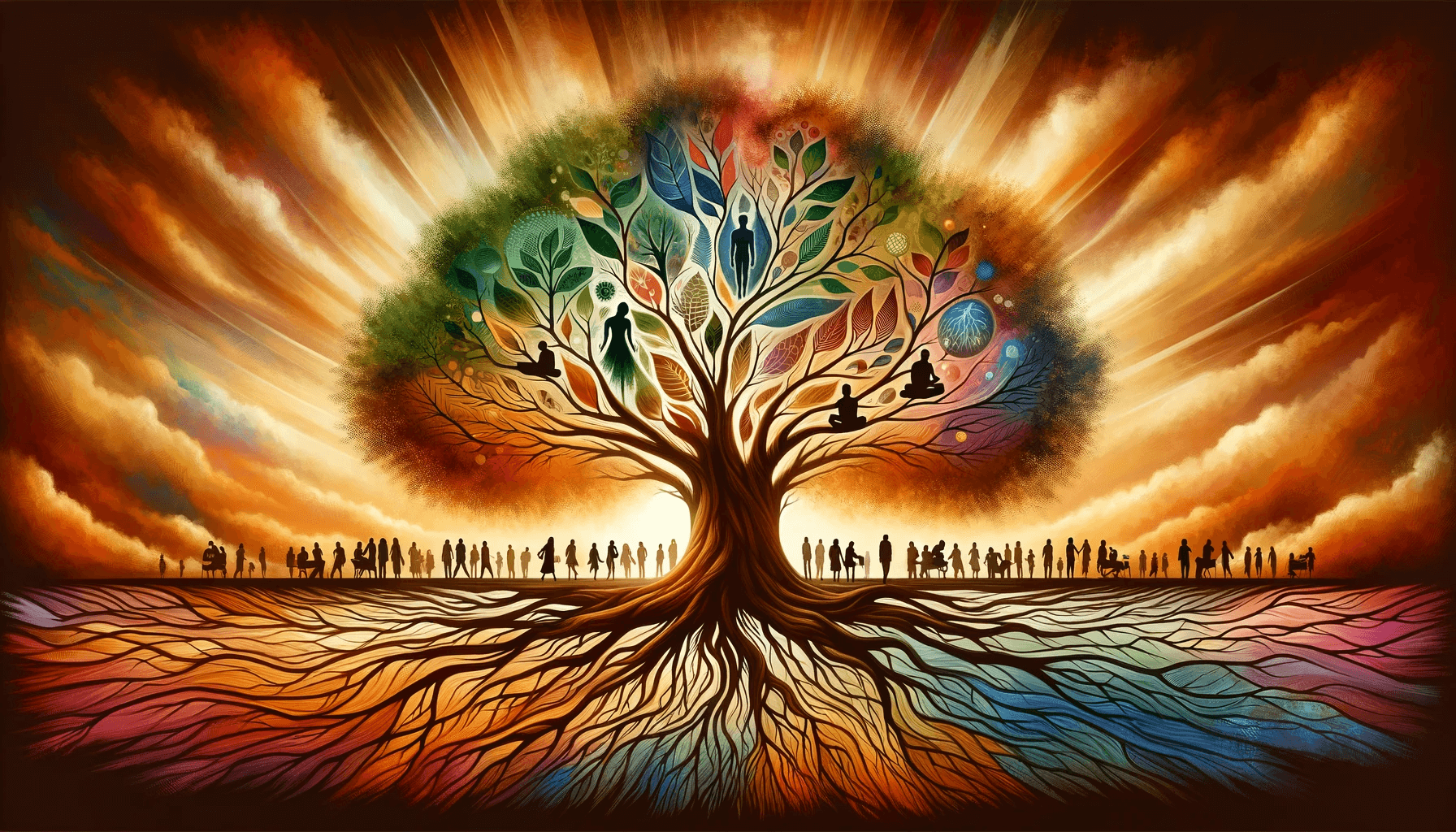Sponsor The Tao of Badass
Table of Contents
What is female hypergamy?
Female hypergamy is a term used to describe the tendency for women to marry or form relationships with men who are of higher social status or possess greater financial resources. This phenomenon has been observed across different cultures and historical periods, suggesting that it may have deep evolutionary roots. Hypergamy can manifest in various ways, from seeking a partner who is more educated or successful to desiring someone who can provide financial security and social status. Understanding the underlying motivations behind female hypergamy can shed light on the complexities of human relationships and help us navigate this aspect of our social dynamics.
Understanding the evolutionary basis of female hypergamy
Understanding the evolutionary basis of female hypergamy involves examining it from the perspective of evolutionary psychology, which seeks to explain certain human behaviors through the lens of natural selection and reproductive strategies. Here are some key points:
- Resource Acquisition and Security: The evolutionary argument for female hypergamy often centers on the notion that historically, women have sought partners capable of providing resources and security. This behavior is posited to enhance the survival and well-being of offspring, a primary concern regarding evolutionary success.
- Mating Strategies for Reproductive Success: From an evolutionary standpoint, selecting a mate with higher social status or wealth is a strategy to maximize reproductive success. High-status males are often perceived as having better access to resources, thus potentially offering greater support and protection for the female and her offspring.
- Genetic Benefits: Another aspect is the pursuit of good genes. A male with higher social status may be perceived as having traits (like intelligence, strength, or resilience) that would benefit offspring. The idea is that these traits, indicative of a person’s ability to navigate and succeed in their environment, are desirable from a reproductive standpoint.
- Parental Investment Theory: This theory, proposed by Robert Trivers, suggests that in species where females invest heavily in offspring (as humans do), they tend to be more selective about mates. The theory posits that women are inclined to choose partners who contribute genetically and have the resources or status to support offspring.
- Adaptive Preferences: Over evolutionary history, preferences that enhanced survival and reproductive success would be more likely to be passed down. Thus, the preference for partners of higher status could be an adaptive trait in certain environments.
- Cultural and Environmental Influence: It’s crucial to note that evolutionary explanations are not deterministic and do not account for all aspects of human behavior. Cultural, social, and individual factors play a significant role in shaping behaviors like mate selection. Evolutionary tendencies interact with these factors in complex ways.
- Critiques and Limitations: The evolutionary perspective on female hypergamy has been critiqued for oversimplifying human relationships and for potentially reinforcing gender stereotypes. Critics argue that evolutionary theories alone are too complex to fully explain human mating behaviors, emphasizing the role of culture, personal choice, and social dynamics.
- Contemporary Relevance: In modern societies, where survival is less directly linked to one’s partner’s status and resources, the relevance of these evolutionary arguments might be less pronounced. Women’s increased economic independence and changing societal norms have also influenced mate selection preferences.
While evolutionary theories provide one lens through which to understand female hypergamy, they are part of a larger picture that includes cultural, social, and individual factors. It’s essential to approach this topic with an understanding of its complexity and the multiple influences on human behavior.
The role of social status in female hypergamy
Social status plays a crucial role in female hypergamy. Social status is associated with power, influence, and resource access in many societies. Women are naturally drawn to men who possess these qualities as they signal an ability to provide and protect. This preference for high-status partners can be traced back to our evolutionary past when men with higher social standing were more likely to access resources and successfully provide for their families. Women who chose partners with higher social status had a better chance of ensuring their survival and that of their offspring.
Social status can be measured in various ways, such as wealth, education, occupation, and social connections. Women tend to gravitate towards men who excel in these domains, as they perceive them as having greater potential for providing a secure and comfortable life for themselves and their children. However, it is important to note that not all women prioritize social status equally, and individual preferences can vary based on personal values, cultural norms, and upbringing.
Financial security and its influence on female hypergamy
Financial security is another significant factor that influences female hypergamy. Historically, women relied on men for financial support, as they were often excluded from economic opportunities. This reliance on men for economic stability has shaped women’s preference for partners who can provide financial security. The desire for a partner who can offer a stable and secure future is deeply ingrained in women’s evolutionary history.
Financial security encompasses various aspects, including a stable income, assets, and the ability to meet the needs and desires of a family. Women are naturally inclined to seek partners who can fulfill these criteria, as it enhances their sense of security and increases the likelihood of creating a stable and comfortable environment for their children. The pursuit of financial security through hypergamy is not solely driven by materialistic desires but also by the instinctual need to ensure the well-being and success of future generations.
The impact of female hypergamy on relationships and marriage
Female hypergamy can have a profound impact on relationships and marriages. Women prioritizing social status and financial security in their partner selection can create imbalances in power dynamics and contribute to inequalities within relationships. Men who do not meet the desired criteria may feel inadequate or resentful, while women may experience pressure to conform to societal expectations. These dynamics can lead to conflict, dissatisfaction, and even the breakdown of relationships.
Moreover, hypergamy can perpetuate gender stereotypes and reinforce traditional gender roles. Women may feel constrained by societal expectations to prioritize their partner’s social status and financial resources over their own personal fulfillment and aspirations. This can hinder their career growth and limit their autonomy and independence.
On the other hand, female hypergamy can also contribute to the formation of thriving relationships. Finding partners who align with their preferences and values can create a sense of compatibility and mutual support. Relationships built on shared goals and aspirations rather than solely on social status or financial security have the potential to foster emotional connection, trust, and long-term satisfaction.
Cultural and Societal Factors Affecting Female Hypergamy
Various cultural and societal factors influence female hypergamy. Cultural norms and expectations significantly shape women’s preferences for partners with higher social status and financial resources. In some cultures, the pressure to marry someone of equal or higher social standing is deeply ingrained. These expectations can be reinforced by family, peers, and societal attitudes, making it challenging for women to deviate from traditional norms.
Societal shifts and advancements, such as increased access to education and economic opportunities for women, have also influenced female hypergamy. As women gain more independence and agency, their priorities and preferences in partner selection may evolve. They may prioritize qualities like emotional intelligence, shared values, and personal compatibility over traditional markers of social status and financial security.
Addressing misconceptions and stereotypes about female hypergamy
Female hypergamy is often misunderstood and subject to harmful stereotypes. It is essential to address these misconceptions to foster a more nuanced understanding of this complex phenomenon. Hypergamy does not imply that all women are solely motivated by social status or financial security. Individual preferences can vary greatly, and women may prioritize other qualities, such as kindness, intelligence, or shared interests, in their partner selection.
It is also crucial to recognize that hypergamy is not exclusive to women. Men, too, can exhibit similar preferences for partners who possess certain desirable qualities. Hypergamy is a multifaceted aspect of human mate selection, influenced by various evolutionary, cultural, and personal factors.
Strategies for navigating female hypergamy in modern relationships
In navigating female hypergamy in modern relationships, communication, understanding, and mutual respect are key. Open and honest conversations about individual preferences, expectations, and values can create a foundation of trust and understanding. Both partners should have the space to express their needs and desires without judgment or pressure.
Recognizing that various factors influence hypergamy, it is important to challenge and question societal norms and expectations. Couples can work together to redefine their definition of success and happiness based on shared goals and aspirations rather than external markers of social status or financial security.
Promoting equality and understanding in relationships
To promote equality and understanding in relationships, it is crucial to dismantle gender stereotypes and expectations. Both partners should be able to pursue their individual goals and aspirations without feeling constrained by traditional gender roles. Building a partnership based on shared values, respect, and support can create a healthier and more fulfilling relationship.
Embracing the complexities of female hypergamy requires acknowledging and respecting individual preferences and choices. It is important to recognize that hypergamy is not inherently good or bad; it is a natural aspect of human behavior shaped by various evolutionary, cultural, and societal factors. By embracing diversity and promoting equality, we can create a more inclusive and fulfilling future for all.
Conclusion: Embracing the complexities of female hypergamy
Female hypergamy is a complex phenomenon that arises from our evolutionary history and is influenced by cultural and societal factors. It is driven by women’s innate desire for social status and financial security, rooted in the instinctual need to ensure the survival and success of their offspring. However, hypergamy is not solely determined by materialistic desires but is also influenced by individual preferences, cultural norms, and personal values.
Understanding and navigating female hypergamy in modern relationships requires open communication, respect, and a willingness to challenge traditional expectations. By promoting equality and understanding, we can foster healthier and more fulfilling relationships that embrace the complexities of human behavior. Embracing diversity and recognizing individual choices and preferences can pave the way for a more inclusive and harmonious future.





Leave a Reply